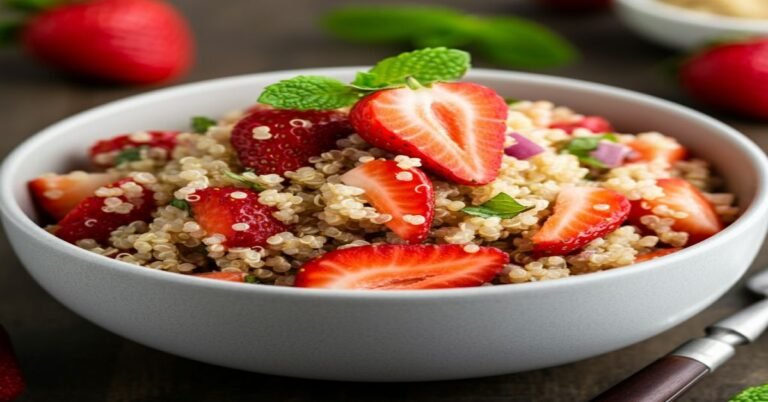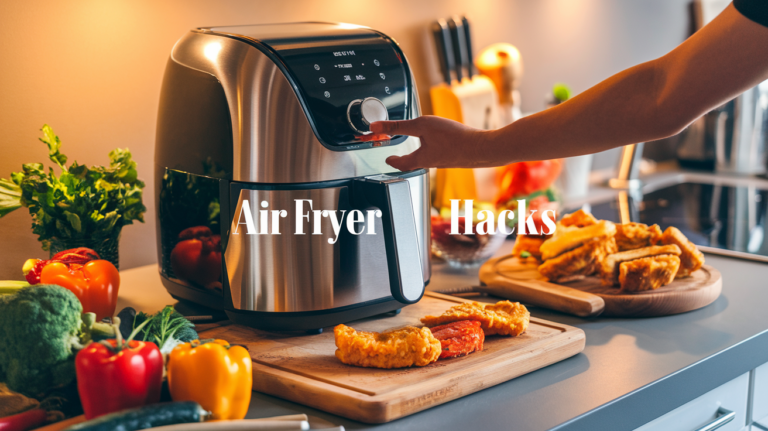Baked Tacos Toppings Ideas
If you want to take your baked tacos to the next level, the secret is all in the toppings. Baked tacos already deliver that irresistible combination of crispy shells and savory, seasoned fillings, but the variety of toppings truly makes them shine. From classic choices like shredded lettuce, diced tomatoes, salsa, and sour cream to more adventurous additions such as creamy guacamole, chopped cilantro, sautéed onions, and even roasted peppers, the possibilities are endless for customizing your perfect bite. Whether you’re serving a crowd or just spicing up your weeknight dinner, exploring new baked tacos topping ideas will keep every taco night fresh and exciting.
Imagine the sizzle of perfectly seasoned meat, the crunch of fresh vegetables, and the tantalizing aroma of exotic spices wafting through your kitchen. Whether you’re hosting a festive Cinco de Mayo celebration or simply elevating your weeknight dinner, our guide to baked taco toppings will inspire you to create a taco bar that’s sure to impress. But here’s the catch: with so many delicious options, how do you choose the perfect combination?
Fear not, taco enthusiasts! We’ve covered you with a comprehensive breakdown of essential components, creative toppings, and unique filling ideas that will take your tacos from ordinary to extraordinary. Get ready to discover the art of balancing flavors and textures, along with practical tips for taco bar success. Let’s dive in and explore the endless possibilities that await in the world of baked taco toppings!
Where Did the Taco Come From?
Tacos originated in Mexico, with their roots tracing back to ancient pre-Hispanic times. Indigenous peoples, including the Aztecs, developed the practice of using corn tortillas as edible utensils to hold a variety of fillings such as beans, fish, or wild game, making early tacos a staple of their diet. The word “taco” is believed to derive from the Nahuatl word tlahco, meaning “half” or “in the middle,” which describes how food is placed inside a tortilla.
The modern term “taco” emerged in the 18th century, initially used by Mexican silver miners to describe paper-wrapped gunpowder charges used in mining. This term was later adopted for the food, likely drawing a parallel to how tortillas wrap around fillings. As Spanish colonization introduced new ingredients like pork, beef, and cheese, tacos evolved, blending indigenous and European culinary traditions.
By the early 20th century, tacos had become a popular street food across Mexico and began to spread internationally, especially with Mexican immigrants in the United States, who adapted the dish to local tastes and ingredients. Today, tacos are recognized as a symbol of Mexican culture and cuisine, celebrated both in their homeland and around the world. If you want to learn more about it. Follow this article –
Essential Components for a Taco Bar
A variety of tortillas and shells
A well-stocked taco bar starts with a diverse selection of tortillas and shells. Offer both soft and crunchy options to cater to different preferences.
- Corn tortillas: Traditional and gluten-free
- Flour tortillas: Softer and more pliable
- Hard taco shells: For those who enjoy a satisfying crunch
- Homemade varieties: For an authentic touch
Protein options (meat and vegetarian)
Provide a range of protein choices to accommodate various dietary needs.
Meat Options Vegetarian Options
Ground beef Refried beans
Chicken Roasted sweet potatoes
Carne Asada Mushroom tacos
Chorizo Grilled vegetables
Side dishes and fillers
Enhance the taco experience with complementary sides:
- Seasoned black beans
- Cilantro lime rice
- Grilled corn
- Fajita veggies (sautéed peppers and onions)
Salsas and sauces
Offer a variety of salsas and sauces to add flavor and heat:
- Pico de gallo
- Tomatillo salsa verde
- Mango salsa
- Chipotle sauce
- Cilantro lime dressing
- Guacamole or avocado sauce
Cheese selections
Complete the taco bar with a selection of cheeses:
- Shredded cheddar or Monterey Jack
- Crumbled cotija
- Queso fresco
- Smoked queso for a gourmet touch
Remember to provide approximately 1/4 pound of filling per guest and 2-3 tacos per person. Keep soft tortillas warm by wrapping them in foil and placing them in a low oven, while crunchy shells can be held at a slightly higher temperature.
With these essential components, your taco bar is ready to impress. Now that we have covered the basics, let’s explore creative toppings to elevate your tacos in the next section.
Creative Toppings to Elevate Your Tacos
Now that we’ve covered the essential components for a taco bar, let’s explore creative toppings that can elevate your tacos to new heights.
Fresh vegetables and herbs
Fresh ingredients add vibrancy and crunch to your tacos. Consider including:
- Shredded lettuce
- Diced tomatoes
- Sliced radishes
- Jicama
- Cilantro
- Fresh chiles (for varying spice levels)
These toppings not only enhance flavor but also provide a refreshing contrast to richer ingredients.
Pickled and tangy additions
Pickled toppings introduce a zesty kick and crunchy texture:
- Pickled red onions
- Pickled jalapeños
- Pickled radishes
These tangy elements cut through the richness of meats and sauces, creating a more balanced taco experience.
Fruit-based salsas and relishes
Fruit salsas offer a sweet counterpoint to savory fillings:
Salsa Type Key Ingredients
Mango salsa Diced mango, red onion, cilantro
Pineapple salsa Chopped pineapple, jalapeño, lime juice
Strawberry salsa Fresh strawberries, mint, balsamic
These unique salsas add unexpected flavors and can transform traditional tacos into gourmet creations.
Creamy and rich toppings
Creamy toppings provide luxurious texture and depth:
- Guacamole
- Avocado sauce
- Cashew sour cream (vegan option)
- Chipotle sauce
- Cilantro lime dressing
These options not only enhance richness but also complement the other flavors in your tacos.
Crunchy texture enhancers
Add an extra layer of texture with these crunchy toppings:
- Tortilla strips
- Fried onions
- Toasted pepitas (pumpkin seeds)
These elements provide a satisfying crunch that contrasts beautifully with softer ingredients.
With these creative toppings, your taco bar will offer an exciting array of flavors and textures. Next, we’ll explore unique and innovative taco filling ideas to further diversify your offerings.
Unique and Innovative Taco Filling Ideas
Now that we’ve explored creative toppings to elevate your tacos, let’s dive into unique and innovative taco filling ideas that will take your taco game to the next level.
Vegan-friendly alternatives
For those seeking plant-based options, consider these innovative fillings:
- Shiitake walnut taco meat: A savory and hearty alternative to traditional ground beef
- Jerk-spiced jackfruit: Mimics the texture of pulled pork while offering a tropical twist
- Grilled avocado: A fresh and creamy option that pairs well with other veggies
Grilled and roasted vegetables
Elevate your taco experience with these flavorful vegetable fillings:
- Fajita veggies: A classic mix of bell peppers and onions
- Roasted sweet potatoes: Add a touch of sweetness and vibrant color
- Crispy air-fried cauliflower: Provides a satisfying crunch
- Sautéed zucchini, carrots, spinach, and corn: A nutritious and colorful medley
Seafood options
For seafood enthusiasts, try these delectable fillings:
Seafood Filling Suggested Pairing
Fresh crab meat Salsa and lime juice
Grilled shrimp Vegetables and avocado
Sashimi Asian-inspired toppings
Beer-battered fish Citrus-pickled onions and habanero aïoli
Unconventional protein choices
Push the boundaries of traditional tacos with these unique protein options:
- Duck confit: A luxurious twist on classic taco fillings
- Chorizo: Adds a spicy kick, especially when paired with cheese and avocado
- Shredded lamb: Complemented by cilantro and onions for a rich flavor profile
- Bugs: For the adventurous eater, insects offer a protein-rich alternative (though not for everyone!)
With these innovative filling ideas, you can create a taco bar that caters to various dietary preferences and culinary adventurers alike. As we move forward, we’ll explore how to balance these unique flavors and textures to create the perfect taco experience.
Balancing Flavors and Textures
Now that we’ve explored unique and innovative taco filling ideas, let’s focus on balancing flavors and textures to create the perfect taco experience.
Combining sweet, spicy, and tangy elements
When crafting your taco, consider the interplay of different flavor profiles:
- Sweet: Incorporate elements like pineapple in Al Pastor Fish Tacos or use Coca-Cola in Coke-Braised Pork Tacos for depth.
- Spicy: Add heat with pickled jalapeños or a habanero aïoli, as seen in Masa-Battered Fish Tacos.
- Tangy: Introduce acidity with citrus-pickled onions or lime wedges, common in Birria tacos.
Flavor Profile Example Ingredient Taco Recipe
Sweet Pineapple Al Pastor Fish Tacos
Spicy Habanero aïoli Masa-Battered Fish Tacos
Tangy Citrus-pickled onions Birria Tacos
Incorporating various levels of crunch
Texture plays a crucial role in elevating your taco experience:
- Soft elements: Tender meats like slow-cooked chicken or beef barbacoa
- Crispy components: Charred cauliflower or crispy tofu skin in Fried Yuba Tacos
- Fresh crunch: Raw vegetables like onions or cabbage slaw
Pairing complementary ingredients
Create harmonious combinations by pairing ingredients that enhance each other:
- Smoky and fresh: Pair charred chile-marinated grilled chicken with fresh tomatillo salsa
- Rich and bright: Balance Texas Chile Short Rib Tacos with a cilantro-lime sauce
- Savory and creamy: Complement spicy shrimp tacos with avocado salsa
By carefully balancing flavors and textures, you’ll create tacos that are not only delicious but also offer a diverse sensory experience. With these principles in mind, we’ll next explore practical tips for taco bar success, ensuring your taco gathering is a hit from start to finish.
You may also like:
Practical Tips for Taco Bar Success
Now that we’ve explored how to balance flavors and textures in your tacos, let’s dive into some practical tips to ensure your taco bar is a resounding success.
Preparation strategies
To minimize stress during your taco party, preparation is key:
- Season and cook meats the day before, storing them in airtight containers
- Chop vegetables and prepare toppings in advance, keeping them fresh in the refrigerator
- Pre-shred cheese or opt for pre-shredded varieties to save time
- Prepare side dishes like beans and rice ahead of time
Keeping ingredients fresh and warm
Maintaining the quality of your taco ingredients throughout the event is crucial:
- Use Crock-Pots for meats to keep them warm
- Employ dual warming trays for rice and beans
- Keep tortillas warm in a tortilla warmer or wrapped in foil in a low-temperature oven
- Use matching ramekins or small bowls for cold toppings, replenishing as needed
Estimating quantities per guest
Item Quantity per guest
Tacos 2-3
Meat 1/4 pound
Tortillas 2-3
Toppings Varied, but plan for abundance
For larger gatherings, consider:
- 15 pounds of meat per 100 guests
- Adjust based on side dishes and expected hunger levels
Creating an interactive dining experience
To make your taco bar engaging and enjoyable:
- Organize toppings in a logical order for easy assembly
- Label items to assist guests in their choices
- Include a variety of salsas and hot sauces for customization
- Add decorative elements like flower arrangements to enhance the atmosphere
- Offer themed beverages such as chilled Topo Chico
- Encourage guests to experiment with different combinations
By following these practical tips, you’ll create a taco bar that not only satisfies your guests’ appetites but also provides an interactive and memorable dining experience.
Taco bars offer a world of culinary creativity, allowing you to explore a variety of flavors and textures. From essential components like tortillas and seasoned meats to innovative toppings such as jerk-spiced jackfruit and strawberry salsa, the possibilities are endless. By balancing traditional elements with unique additions, you can create a taco experience that caters to diverse tastes and dietary preferences.
Remember, the key to a successful taco bar lies in preparation and presentation. Offer a mix of proteins, vegetables, and sauces to accommodate all guests. Keep ingredients fresh and warm, and encourage experimentation with different combinations. Whether hosting a dinner party or celebrating Cinco de Mayo, a well-curated taco bar is sure to delight your guests and make any gathering memorable. So gather your favorite toppings, fire up the grill, and embark on a delicious taco adventure!








